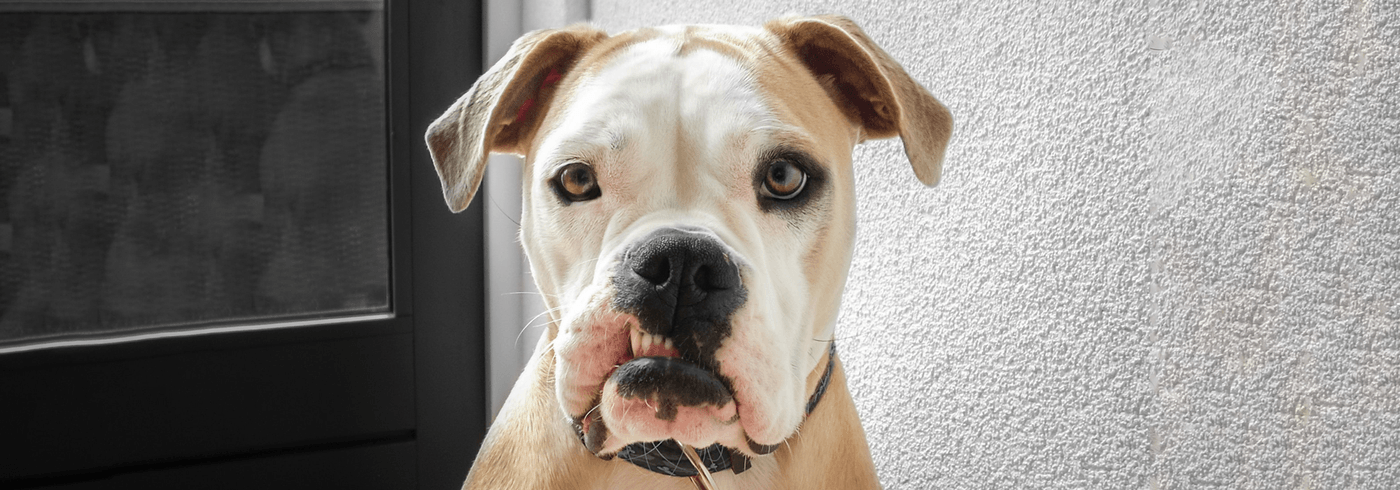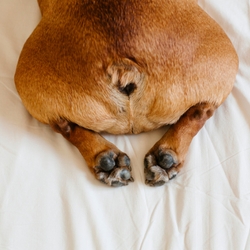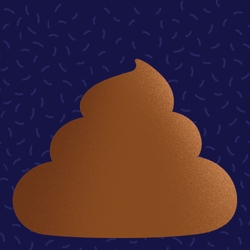
My dog's eyes are running — should I be concerned?
We would like to think that the only thing that brings tears to our pupper's eyes is the thought of spending an afternoon without us, but alas, some (okay, most) of the common causes of runny eyes might be more physiological than they are sentimental.
Are your dog’s eyes running? Well you better go catch ‘em!
Bad jokes aside, constantly watery or gunky eyes could be a sign of some more serious issues for your canine friend, or they could be nothing more than a passing bother. For the most part, anything concerning will be accompanied by other noticeable irritation like redness, but sometimes it’s worth calling up the vet anyway, just to be safe. Let’s explore the different kinds of gunk that might be gushing from your dog’s peepers, and how to know when it’s time to head to the vet.
Sleep goop that causes minor crusting
Just like when you wake up a little crustier than usual, that extra bit of buildup in your dog’s eye probably isn’t anything abnormal. ‘Sleep’ as it’s known (due to its usual appearance after, well, sleeping) is a deposit of dried tears, oil, mucus, dead cells, dust, and other little fragments of miscellanea that collect near the tear ducts at the corner of the eye.
Tears are super important in maintaining healthy eyes, as they supply oxygen and nutrition to the cornea (the eyeball’s outermost layer) and help wipe away any foreign entities that end up between the lids. Because of this wiping function, it’s perfectly normal that the mess the tears are collecting ends up situated next to their main drainage points. As long as your dog doesn’t have any other signs of irritation like squinting, rubbing, high-frequency blinking, or light sensitivity, you should be fine to wipe away their eye boogers with a warm cloth and let them run off into the day with clear eyes, full hearts, and less snooze.
Eye gunk that leaves rust-colored stains
Blondes may have more fun, but blonde pups are much more prone to staining their own coat with their eye goo. You may notice some reddish-brown discoloration of the fur at the inner corners of the eyes in dogs with light-colored fur. Thankfully, this is a normal reaction between the chemicals in their tears and the stainability of their coat. Tears actually contain porphyrin, a pigment that turns more rust-colored the longer it’s exposed to the air.
Even though it may give your pup some unsightly dark circles, this is almost always just a cosmetic problem. You have some options, though, if the tear-stained look isn’t your dog’s style: wipe the area a few times a day with a warm wet cloth or eye cleaning solution, keep the fur around the eye area trimmed super short, and/or incorporate a supplement that reduces tear staining into their daily diet. Just remember that stained fur can take a few months to grow all the way out, so you’ll have to give the new routine some time to kick in before seeing major results.
Clear tears that flow like a waterfall
If your dog suddenly looks like he’s been watching “The Notebook” on a loop, there might be something a little more nefarious at play. Excessive eye watering, known as epiphora, can be attributed to a number of conditions. Allergies, irritants like bug spray or sunscreen, anatomical abnormalities, clogged tear ducts, scratched corneas, and even glaucoma can cause epiphora in dogs.
If you notice a little extra wetness with no other symptoms, you’re probably fine to keep monitoring the situation at home. Fido may have just inhaled a face full of pollen this morning and his eyes are working overtime to clear the area. If the condition persists or grows into a red, painful situation, it’s time to go to head to the V-E-T.
White or gray mucus
White or white-adjacent-colored mucus collecting around your dog’s eyes should be addressed by a vet with a simple Shirmer Tear Test, a procedure that helps differentiate more benign afflictions from something known as KCS, or keratoconjunctivitis sicca — basically a super (like, super, duper) long name for dry eye.
As inane as ‘dry eyes’ might sound, KCS is often a result of a dog’s immune system targeting its tear glands and stopping up tear production. Missing that natural lubrication, the dog’s body tries to replace the tears with mucus, but it’s just not quite the same. Eyes can get red, painful, and even develop nasty ulcers that can end up causing not only severe discomfort, but even blindness. Most dogs will respond well to KCS treatment, but there’s also an intense duct re-routing surgery if all other hope is lost. Best to catch it early and get to the vet when this problem first begins.
Yellow or green discharge
Discharge that’s colored like the Green Bay Packers is almost as bad as the winters in Wisconsin - you’ll want to do something about it before things escalate beyond your control. Dogs with green or yellow eye gunk in their eyes usually have some kind of eye infection, especially if signs of redness or pain are also evident. Eye infections can be the whole problem in themselves, or can be indicators of a larger systemic illness, so you’ll want to bribe your dog into the car and try to reassure them that the vet only wants to help them faster than a Packers fan can say ‘Ope!’.




Comments: